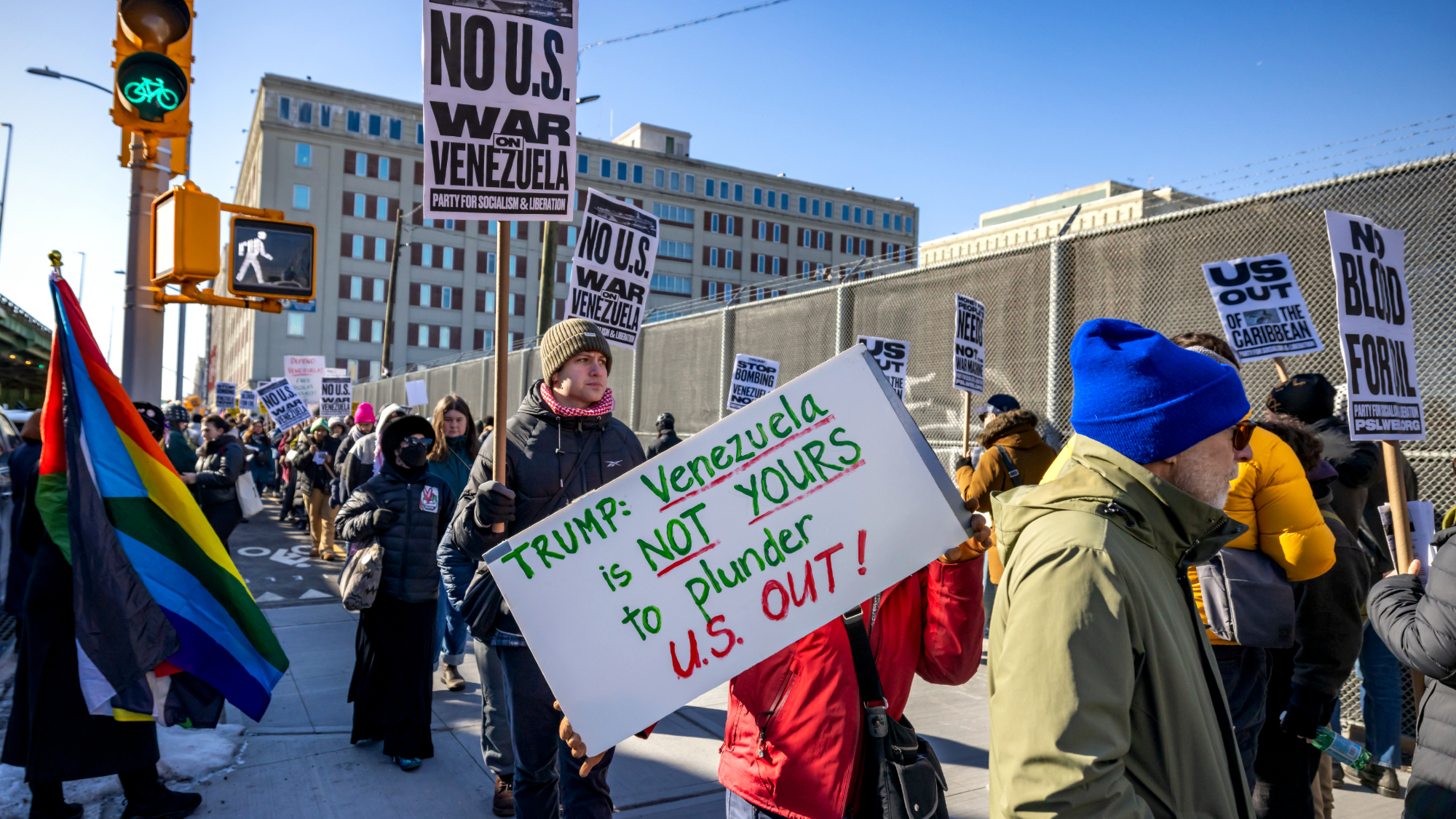Stonehenge: project reveals secrets of what lies beneath
Archaeologists say discovery of new monuments 'fundamentally changes' how we view Stonehenge

An unprecedented survey of the ancient grounds surrounding Stonehenge has revealed scores of archaeological discoveries, including previously unknown burial mounds, massive pits and ritual shrines.
Researchers say the findings could "fundamentally change" how we view Stonehenge, seen as the most important archaeological monument in Britain.
Researchers have spent four years surveying 12 sq km of land, the equivalent of 1,250 football fields, and created the most detailed map ever produced of the earth beneath the monument and the surrounding area.
The Week
Escape your echo chamber. Get the facts behind the news, plus analysis from multiple perspectives.

Sign up for The Week's Free Newsletters
From our morning news briefing to a weekly Good News Newsletter, get the best of The Week delivered directly to your inbox.
From our morning news briefing to a weekly Good News Newsletter, get the best of The Week delivered directly to your inbox.
"The findings really do change how we view Stonehenge. It no longer sits isolated in the centre of a plain," Vince Gaffney, head of the Stonehenge Hidden Landscapes Project at Birmingham University, tells The Guardian.
His team uncovered at least 17 late-monolithic monuments, of a similar period and style to Stonehenge. Gaffney says they are smaller in scale but "nonetheless intimately linked with the stones themselves and representing what must have been smaller ritual shrines or something of that sort".
Dozens of burial mounds were also mapped in detail, including a 33 metre-long burial mound containing a timber building, which researchers believe was used for "the ritual inhumation of the dead". These burials would have followed a ritual of exposing the corpse and then "defleshing" it, said researchers.
Another surprise find was traces of up to 60 more large stones that formed part of a "super henge" previously identified at nearby Durrington Walls. This immense ritual monument, thought to be the largest of its kind in the world, has a circumference of more than 1.5km.
A free daily email with the biggest news stories of the day – and the best features from TheWeek.com
The discoveries were largely made possible by new technologies, such as high-resolution magnetometers and ground-penetrating radar that scan the ground to detect structures and objects several metres below the surface.
The new technology has also enabled archaeologists to discover massive prehistoric pits, some of which appear to form astronomic alignments, as well as new information on Bronze Age, Iron Age and Roman settlements and fields at a level of detail never previously seen.
-
 How robust is the rule of law in the US?
How robust is the rule of law in the US?In the Spotlight John Roberts says the Constitution is ‘unshaken,’ but tensions loom at the Supreme Court
-
 Magazine solutions - December 26-January 2
Magazine solutions - December 26-January 2Puzzles and Quizzes Issue - December 26-January 2
-
 Venezuela ‘turning over’ oil to US, Trump says
Venezuela ‘turning over’ oil to US, Trump saysSpeed Read This comes less than a week after Trump captured the country’s president
-
 Stonehenge Altar Stone came from Scotland, study finds
Stonehenge Altar Stone came from Scotland, study findsSpeed Read New analysis says the six-ton megalith actually came from Scotland and not Wales, as previously thought
-
 Richard Branson’s Virgin Galactic and Jeff Bezos’s Blue Origin: the new space race?
Richard Branson’s Virgin Galactic and Jeff Bezos’s Blue Origin: the new space race?Speed Read Branson has declared space open for business. Is that still a pie in the sky?
-
 Russia and China joining forces to build first Moon base
Russia and China joining forces to build first Moon baseSpeed Read Lunar pact represents ‘all kinds of security threats’ to UK and US, expert warns
-
 Mystery of where Stonehenge stones came from finally solved
Mystery of where Stonehenge stones came from finally solvedSpeed Read But how the builders moved the huge stone megaliths to the Salisbury site remains a mystery
-
 How chimpanzee ‘lip smacking’ can unlock mystery behind human speech
How chimpanzee ‘lip smacking’ can unlock mystery behind human speechSpeed Read New study reveals rhythm of great apes’ communications is identical to spoken language
-
 Scientists discover new variety of black hole
Scientists discover new variety of black holeSpeed Read Astronomers had previously missed entire class of dead star
-
 Trio win Nobel physics prize for work to understand cosmos
Trio win Nobel physics prize for work to understand cosmosSpeed Read The scientists were hailed for ‘ground-breaking’ discoveries
-
 Quadriplegic man walks using mind-reading robotic exoskeleton
Quadriplegic man walks using mind-reading robotic exoskeletonSpeed Read Robo-suit hailed as huge step forward for paralysed patients